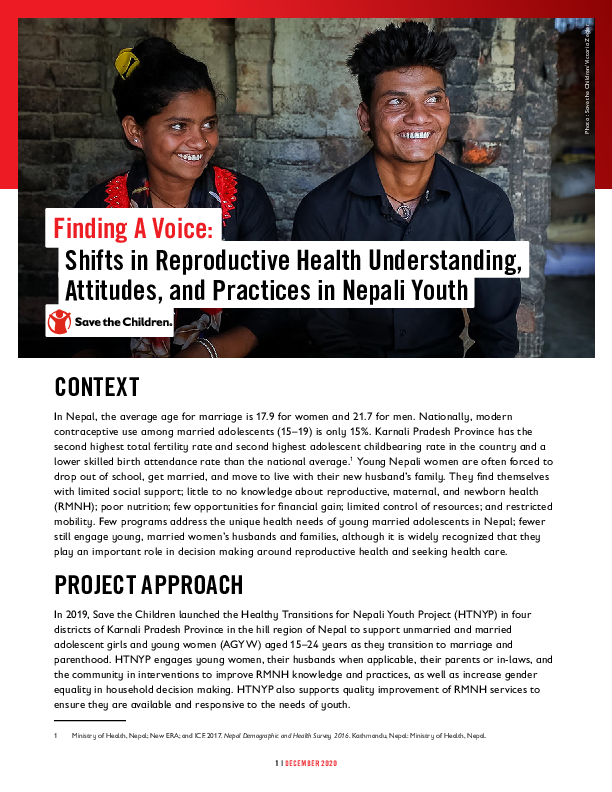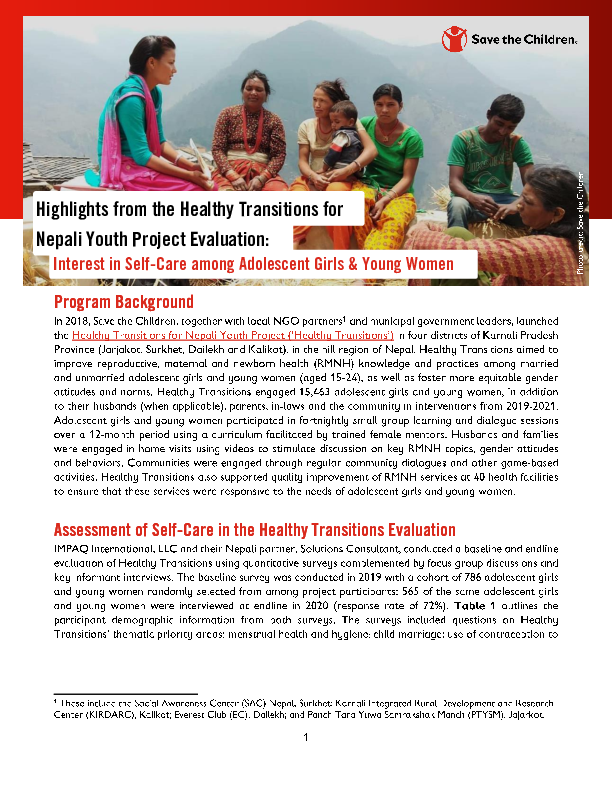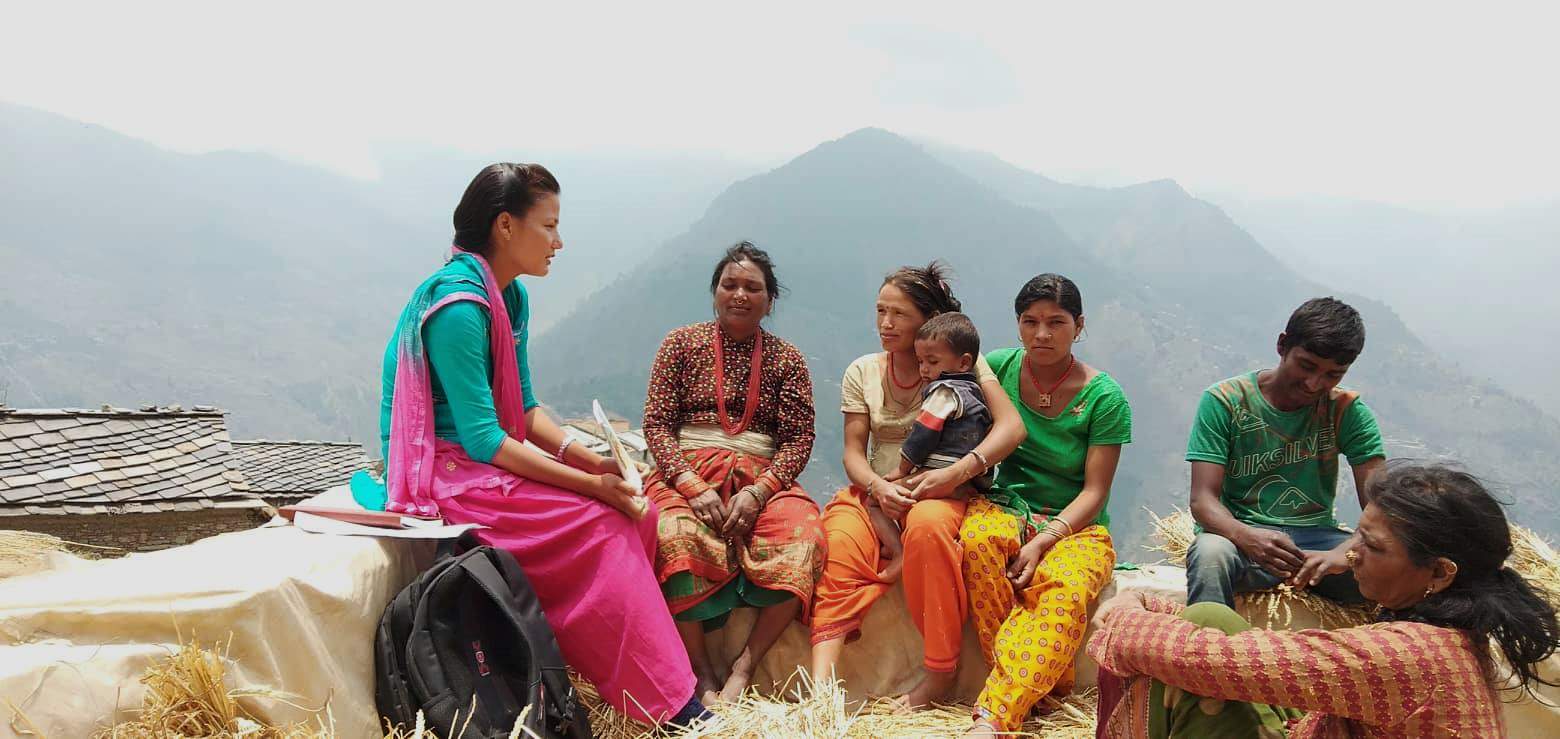
Briefs, Fact Sheets and Brochures
Finding A Voice: Shifts in Reproductive Health Understanding, Attitudes, and Practices in Nepali Youth
Publication year:
2020
English
Format:
pdf (686.0 KiB)
Publisher:
Save the Children US
In Nepal, the average age for marriage is 17.9 for women and 21.7 for men. Nationally, modern contraceptive use among married adolescents (15–19) is only 15%. Karnali Pradesh Province has the second highest total fertility rate and second highest adolescent childbearing rate in the country and a lower skilled birth attendance rate than the national average.1 Young Nepali women are often forced to drop out of school, get married, and move to live with their new husband’s family. They find themselves with limited social support; little to no knowledge about reproductive, maternal, and newborn health (RMNH); poor nutrition; few opportunities for financial gain; limited control of resources; and restricted mobility. Few programs address the unique health needs of young married adolescents in Nepal; fewer still engage young, married women’s husbands and families, although it is widely recognized that they play an important role in decision making around reproductive health and seeking health care.
Read full abstract
View & Download
Document information
Publisher
Format
Content type
Country
Region
Rights
© Author/Publisher
Found a mistake? Help us improve!
If you have noticed a document assigned to the wrong author or any other inaccuracies, let us know! Your feedback helps us keep our data accurate and useful for everyone.
Share
Link


